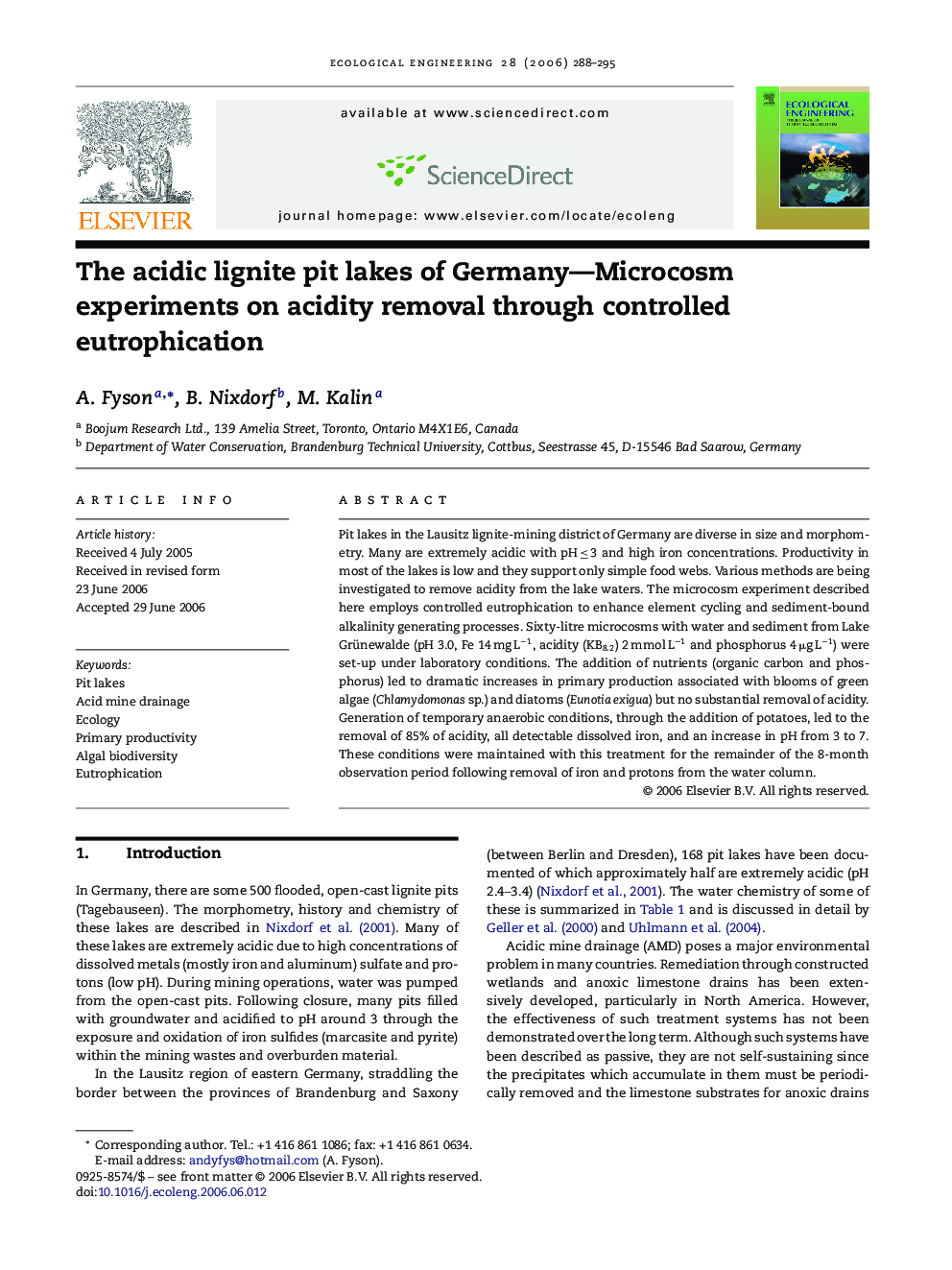| Article ID | Journal | Published Year | Pages | File Type |
|---|---|---|---|---|
| 4391163 | Ecological Engineering | 2006 | 8 Pages |
Abstract
Pit lakes in the Lausitz lignite-mining district of Germany are diverse in size and morphometry. Many are extremely acidic with pH â¤Â 3 and high iron concentrations. Productivity in most of the lakes is low and they support only simple food webs. Various methods are being investigated to remove acidity from the lake waters. The microcosm experiment described here employs controlled eutrophication to enhance element cycling and sediment-bound alkalinity generating processes. Sixty-litre microcosms with water and sediment from Lake Grünewalde (pH 3.0, Fe 14 mg Lâ1, acidity (KB8.2) 2 mmol Lâ1 and phosphorus 4 μg Lâ1) were set-up under laboratory conditions. The addition of nutrients (organic carbon and phosphorus) led to dramatic increases in primary production associated with blooms of green algae (Chlamydomonas sp.) and diatoms (Eunotia exigua) but no substantial removal of acidity. Generation of temporary anaerobic conditions, through the addition of potatoes, led to the removal of 85% of acidity, all detectable dissolved iron, and an increase in pH from 3 to 7. These conditions were maintained with this treatment for the remainder of the 8-month observation period following removal of iron and protons from the water column.
Related Topics
Life Sciences
Agricultural and Biological Sciences
Ecology, Evolution, Behavior and Systematics
Authors
A. Fyson, B. Nixdorf, M. Kalin,
